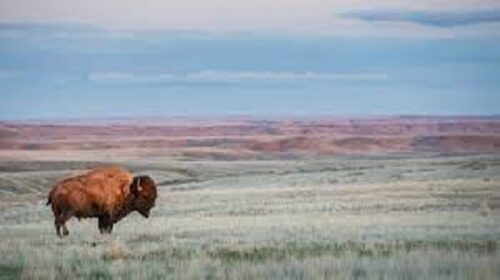2 Aug 2022
Cameron Carlyle is a researcher at the University of Alberta who is the head of a $3.5 million project examining the carbon sequestration of grasslands.

According to Carlyle, grasslands, which are Canada’s most endangered ecosystem, sequester and store huge amounts of carbon. But most of these grasslands in Canada are privately owned and are threatened with cultivation and being turned into cropland, a process that would release up to 50% of the sequestered carbon into the atmosphere.
“Landowners are looking for revenue, and that’s either going to come from beef production or it’s going to come from crops,” said Carlyle. “So having cattle on the landscape is keeping our native grasslands as native grasslands.”
“It is an incentive for landowners to keep their grasslands if they can gain revenue by raising cattle there,” argued Carlyle.
Most of the Canadian beef is partially grain-fed, meaning that at some point the cows were fattened in feedlots, but cows in Canada are almost always born and raised on grassland pasture before being transferred to a feedlot.
“When we think about our beef production cycle, it relies on our perennial vegetation in either native or in untamed pastures,” said Carlyle. “This is because it’s a relatively inexpensive source of forage. It’s a critical part of beef production.”
Nevertheless, grazing cattle are also critical to maintain the health and existence of Canada’s grasslands. As they live a feed on the wild pastures, they mimic the activity of the great bison herds that trampled, preserved and stimulated the grasslands to sequester the carbon in the ground – instead of letting it be released into the atmosphere to accelerate climate change.
We bring leather, material and fashion businesses together: an opportunity to meet and greet face to face. We bring them from all parts of the world so that they can find fresh partners, discover new customers or suppliers and keep ahead of industry developments.
We organise a number of trade exhibitions which focus on fashion and lifestyle: sectors that are constantly in flux, so visitors and exhibitors alike need to be constantly aware both of the changes around them and those forecast for coming seasons.